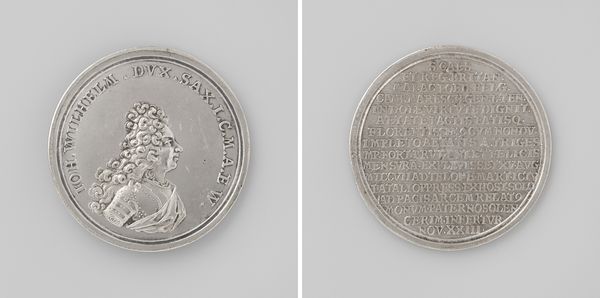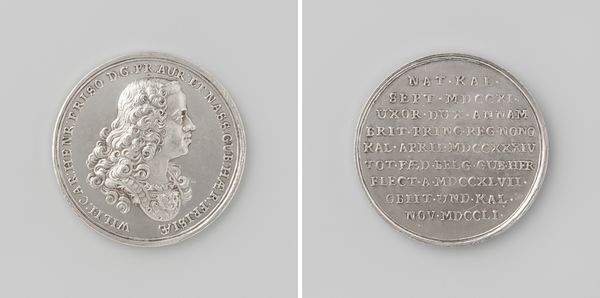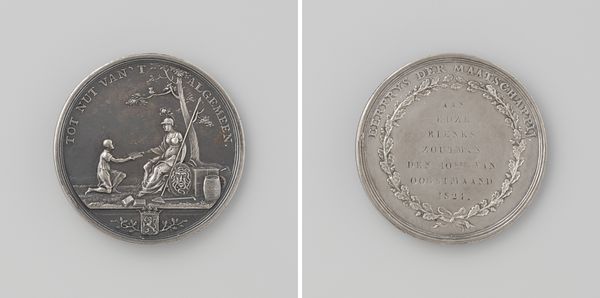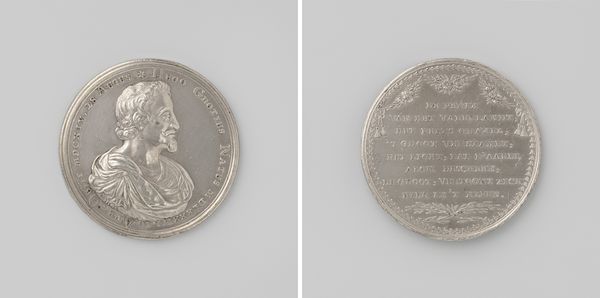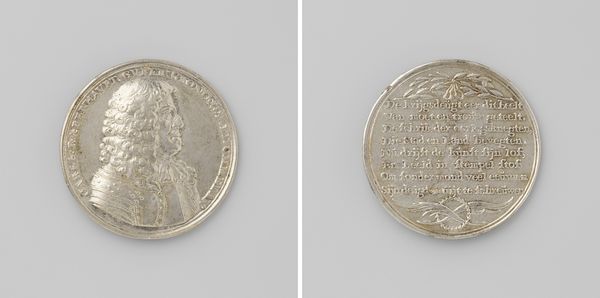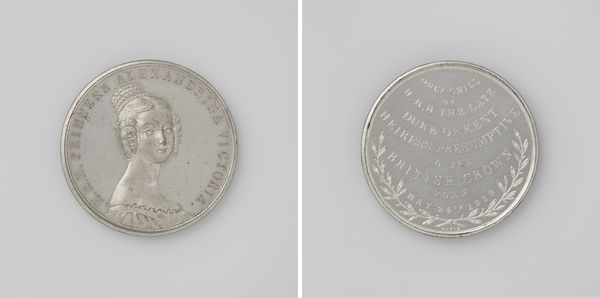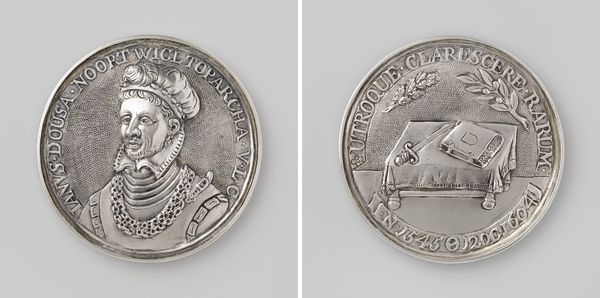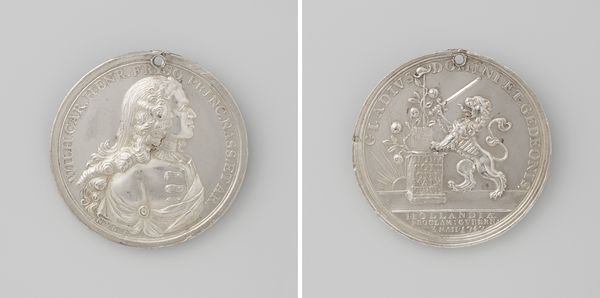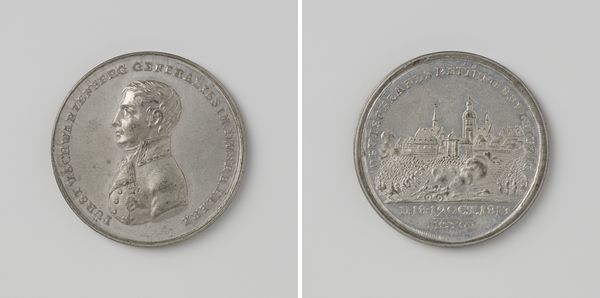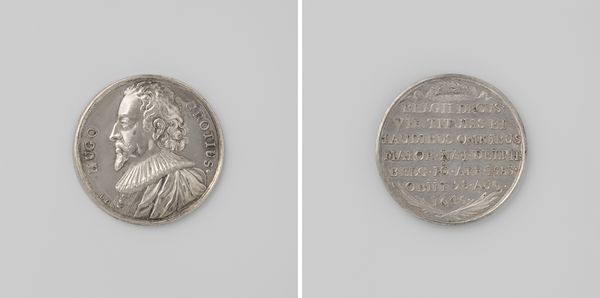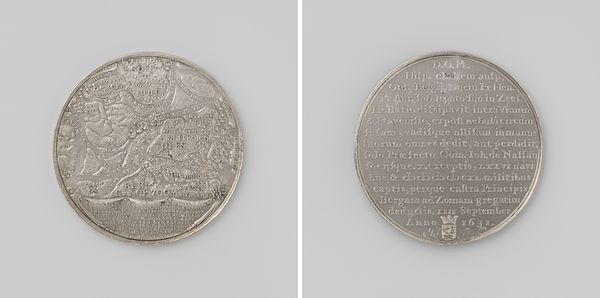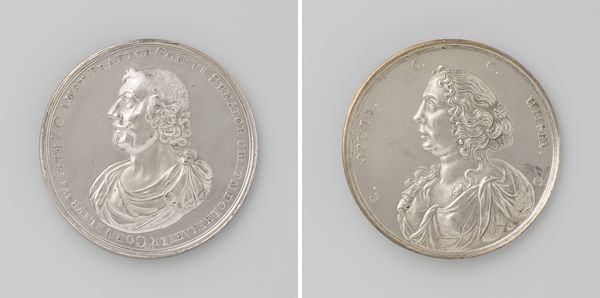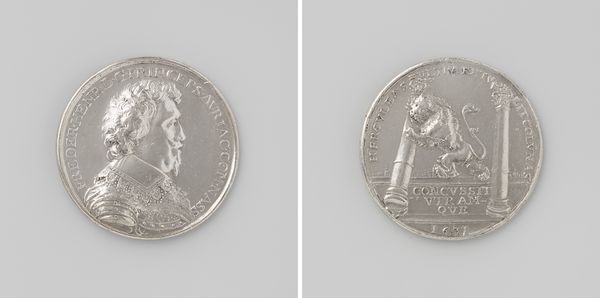
silver, metal, sculpture
#
portrait
#
medal
#
silver
#
baroque
#
metal
#
sculpture
Dimensions: diameter 5.6 cm, weight 89.33 gr
Copyright: Rijks Museum: Open Domain
Curator: Here we have a silver medal, “Johann Willem, hertog van Saksen-Gotha sneuvelt bij Toulon,” made in 1707 by Johann Christian Koch. It's quite small. My immediate impression is how striking the details are for such a modest scale. Editor: Modest is certainly the word that comes to mind. Its form, of course, is classical, mimicking coinage or perhaps a seal. But there is something about this object as a type. What exactly *is* a medal doing in this collection? It seems more craft than high art. Curator: Consider the interplay of portraiture and inscription. The way the profile is rendered – the armor, the voluminous wig – is deliberate. These visual elements communicate power and status in a highly stylized, baroque manner. We need to understand these semiotic choices. Editor: True, but how were these signifiers manufactured, how widely were they distributed? As an object made of silver, who had access to it? Were these commemorative items or symbols of class stratification? Was Koch's choice of metal commenting on these same signifiers, and thus subverting, or embracing them? Curator: Perhaps both. I am drawn to how Koch has successfully employed relief to capture Johann Willem's likeness and to give a tactile, almost sculptural presence. These aesthetic values transcend mere function. Editor: And yet, we cannot ignore that the very nature of a medal implies function: commemorating an event and, in this case, producing meaning and consolidating power through material culture. Without context, this is just a beautifully wrought, though inherently reproducible object. Curator: Reproducibility doesn't diminish its artistic intent or execution. Its symmetries are captivating, its very shape invites focused viewing and handling, regardless of how it ended up here, a key element in unlocking the intended visual experience for its owner. Editor: And that is precisely my point: its experience *as* a circulated, touchable item must have held currency as social commentary, as an instrument of Baroque era self-fashioning and social engineering that would challenge any attempt to consider this object apart from the way the laboring bodies helped to craft its purpose and its appeal.
Comments
No comments
Be the first to comment and join the conversation on the ultimate creative platform.
